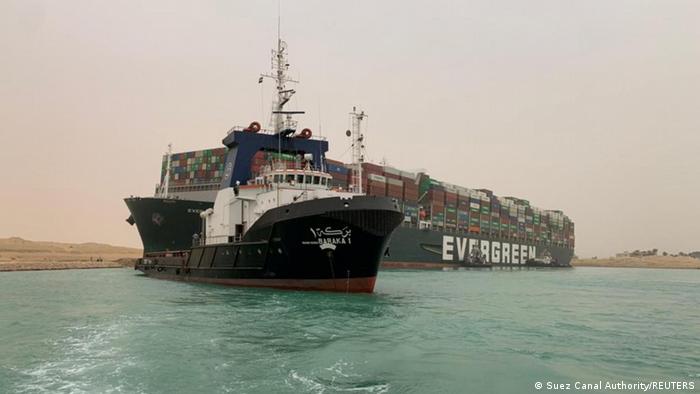By Muhammad Dhiyauddin Ahmad Zamri
Shipping is an important aspect of transportation for delivering goods and luxury from one point of the world to another point. There are many vehicles used to deliver the goods but the cheapest way is by boats. Shipping by airplane is usually three times more expensive than by boats.
The Suez Canal is a 120-mile long canal located 75 miles east of Cairo, Egypt. It is one of the worlds most important waterways. It connects the Mediterranean Sea to the Red Sea, allowing direct shipping from Europe to Asia. The canal was completed in 1869 and multiple countries have claimed ownership and control of the canal, which threatened to spark a conflict and become a cornerstone of the global economy.
The Suez Canal is crucial because of its location. It is the only point where the waters of Europe meet those of the Arabian Sea, the Indian Ocean, and Asia-Pacific countries. Without it shipments will take longer to traverse the entire continent of Africa which will increase the cost of shipping.
A ship sailing from a port in Italy to India, for example, would cover approximately 4,400 nautical miles if it travelled through the Suez Canal, a trip that would take about nine days at a speed of 20 knots. Whereas, it will take three weeks travelling at the same speed for the second fastest route. There are no other alternative like the Suez Canal which hosts nearly 19,000 vessels each year, according to Lloyds List, a shipping industry journal.
A container ship named Ever Given, a 400-metre long, 1,312 feet tall, and 220,000 ton ship was grounded accidentally on 23 March 2021. The Ever Given was stranded about 3.7 miles north of the canal’s southern entrance, near the Egyptian city of Suez. It happened in a 985-foot-wide single-lane stretch of the canal.
It was believed that the cause of the ship grounding was because of strong wind, knocking the ship off course, according to the company. The chairman of Egypt’s Suez Canal Authority, however, said that weather conditions “were not the main reasons” for the grounding, and that “technical or human reasons” may have played a role, according to British Broadcasting Corporation (BBC) report.
The process of freeing the Ever Given took a whole week and involved many manpower working day and night. Tugboats and dredgers were occupied in the sea while standard earthmoving machines operated on the coast. Dredgers are ships with devices that clear sand and mud from the seabed. Bucket-like structures can be used to lift material to the floor, and hydraulic pumps can vacuum it up. Tugboats were used to pull and push the large vessel free, reported the BBC.
A full moon and high tides inside the canal helped salvagers. Associated Press (AP) reported that the full moon brings spring tides, also known as king tides, which are higher and lower than normal. During the straight-line orientation of the Earth, the moon and the sun, gravity has a greater effect on tides. The spring high tides filled the canal with a few inches of water, making removal easier. The Ever Given was eventually freed on Monday (29 March).
The blockage of the Suez Canal left a significant impact in the world especially on how much it cost to every business that used the waterway. Every day, the canal carries nearly 12% of world trade, one million barrels of crude, and 8% of liquefied natural gas.
On Saturday (27 March), SCA chairman Osama Rabie said the Canal’s profits were being affected by $14 million to $15 million (£10.2 million to £10.9 million) every day of the blockage. Separately, Lloyd’s List data revealed that the stranded ship was preventing an estimated $9.6 billion in trade from passing across the waterway each day. That’s $400 million and 3.3 million tons of freight per hour, or $6.7 million per minute.
Looking at the big picture, Allianz, a German insurer, said on Friday (26 March) that the blockage could cost global trade $6 billion to $10 billion every week, reducing annual trade growth by 0.2 to 0.4 percentage points. The expense of contracting certain vessels to carry freight to and from Asia and the Middle East has risen 47 percent to $2.2 million, according to shipping broker Braemar ACM.
There were estimated to be more than 300 ships waiting in and around the Suez Canal. “This means that despite a successful operation to move the grounded vessel, we could still be looking at a possible five- to seven-day wait for the buildup to clear,” said Charlotte Cook, head trade analyst at VesselsValue.
According to VesselsValue, there are 130 vessels en route to the canal, with 18 docking on or before March 30, 26 before March 31, and 44 before April 1. Because of the uncertainty, some shippers have had to change direction to take the slower, alternate path around Africa’s Cape of Good Hope, adding weeks to their journeys and raising concerns of piracy. Some also inquired about expanded security with the US Navy.***
(This article is written as part of the individual assignment series for Feature Writing class)
